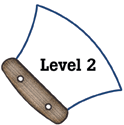|
National Science Education Standards
Use data to construct a reasonable explanation. This aspect of the standard
emphasizes the students’ thinking as they use data to formulate explanations.
Even at the earliest grade levels, students should learn what constitutes
evidence and judge the merits or strength of the data and information
that will be used to make explanations. After students propose an explanation,
they will appeal to the knowledge and evidence they obtained to support
their explanations. Students should check their explanations against scientific
knowledge, experiences, and observations of others. (Page 122)
Communicate scientific procedures and explanations. With practice, students
should become competent at communicating experimental methods, following
instructions, describing observations, summarizing the results of other
groups, and telling other students about investigations and explanations.
(Page 148)
|
|
Benchmarks
Scientists do not pay much attention to claims about how something they
know about works unless the claims are backed up with evidence that can
be confirmed and with a logical argument. (Page 11)
Offer reasons for their findings and consider reasons suggested by others.
(Page 286)
|

